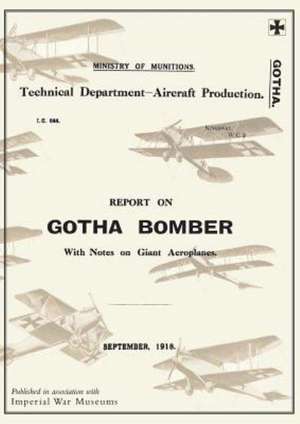Report on the Gotha Bomber. with Notes on Giant Aeroplanes, September 1918reports on German Aircraft 9
Editat de Ministry of Munition Aircraft Productioen Limba Engleză Paperback – 11 mar 2014
Preț: 99.63 lei
Nou
Puncte Express: 149
Preț estimativ în valută:
19.06€ • 19.96$ • 15.77£
19.06€ • 19.96$ • 15.77£
Carte tipărită la comandă
Livrare economică 07-21 aprilie
Preluare comenzi: 021 569.72.76
Specificații
ISBN-13: 9781783310579
ISBN-10: 178331057X
Pagini: 46
Dimensiuni: 210 x 297 x 3 mm
Greutate: 0.14 kg
Editura: NAVAL & MILITARY PRESS
ISBN-10: 178331057X
Pagini: 46
Dimensiuni: 210 x 297 x 3 mm
Greutate: 0.14 kg
Editura: NAVAL & MILITARY PRESS












